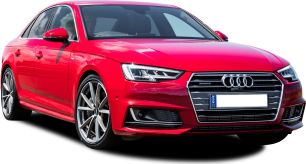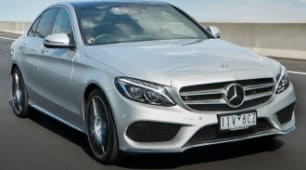Keen to sample the new hybrid tech in the C200, we made a beeline for the cheapest C-Class. And if you’d told me, even a handful of years ago, that a piddly 1.5-litre engine would be enough to drag the 1555kg Benz around, I’d have labelled you crazier than Donald Trump's Twitter account.
The C200’s system is a unique hybrid set-up, in the sense that it only delivers extra power in the tiniest of circumstances, but they’re the areas that it really needs it. From a standstill, the electric motor delivers its extra 11kW of oomph at just the right moment need to help get you moving (the same when overtaking) and it does genuinely make a difference.
It can’t completely overrule the concrete laws of physics, though. Plant your foot on anything that even looks like a hill and you can definitely hear that 1.5-litre engine working hard - interrupting the ambience of the cabin - but keep it in the sweet-spot of the rev range and it’s a quiet, capable-feeling engine that delivers more punch than its size might suggest.
On Germany’s epic autobahns, the needle even sailed past 215km/h without too much encouragement (even if I could have knitted a sweater in time it took to to close the last 10-or-so-kilometres). Is that relevant for Australia? Sadly not, but it does suggest the engine is more capable than we will ever need it to be.
Elsewhere, the not-too-different C-Class rides an absolute dream, smooth-sailing over bumps and road imperfections, and the cabin is serene and comfortable - though there was more wind noise at times than I was expecting.
Downsides? Well, the cheapest C-Class doesn’t feel the most dynamic offering, with the light steering serving up a slight disconnect between the steering wheel and the road below in its most comfortable settings. Switching to Sport improves matters, but if you’re life is mostly city and suburbs, it will matter little.
The nine-speed transmission can behave oddly at times, too; smooth and lightning fast as it climbs the gears, and mostly perfect on the way back down. But I noticed a definite thump occasionally as it shifted down from second to first gear, which stripped a little refinement from the drive experience.
It's more noticeable in the C 43 4Matic AMG, but it's vastly overshadowed by the thick and meaty power delivery from that stonking turbocharged engine. It's a rocket, and while it's not as fast or as loud as its C 63 big brother, I honestly think the tweaked C 43 is all the AMG I'd ever need.

